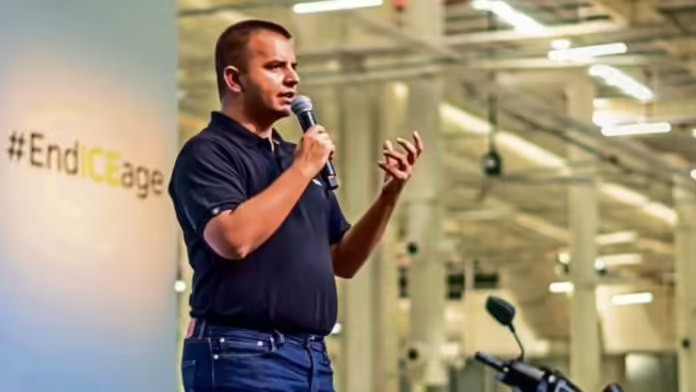In the race to dominate India’s burgeoning electric vehicle (EV) market, Ola Electric has set its sights on a game-changing innovation: solid-state batteries. According to reports from Reuters, the company, led by founder and CEO Bhavish Aggarwal, is actively developing these advanced batteries with the aim of integrating them into their electric scooters as early as next year.
Solid-state batteries represent a significant leap forward in battery technology. Unlike conventional lithium-ion batteries that power most EVs today, solid-state batteries use a solid electrolyte instead of a liquid or gel electrolyte. This design offers several advantages, including higher energy density, longer lifespan, improved safety, and faster charging times. These attributes make them highly desirable for electric vehicles, promising to address some of the key limitations that currently constrain EV adoption.
However, the path to implementing solid-state batteries is fraught with challenges. One of the major hurdles is the cost involved in manufacturing these advanced batteries. Additionally, there are constraints related to the availability of raw materials and the intricate manufacturing processes required to produce them at scale. Despite these challenges, Ola Electric remains optimistic about the potential of solid-state batteries to revolutionize the EV industry.
Aggarwal emphasized that Ola Electric is in the early stages of experimenting with solid-state batteries. The company’s ambitious timeline coincides with the commencement of commercial production at its upcoming battery “gigafactory” in Tamil Nadu. This facility is expected to play a pivotal role in scaling up production to meet the growing demand for electric scooters equipped with these advanced batteries.
In addition to solid-state batteries, Ola Electric has also been actively working on improving the efficiency of its battery cells. The company has started manufacturing the more efficient 4680 form of battery cells, which are touted to outperform the widely used 2170 counterparts. Despite the promising performance of these cells, challenges remain in scaling up their production to meet commercial demands.
Aggarwal revealed that Ola Electric’s 4680 cells have already received key domestic certifications, marking a significant milestone in the company’s quest to establish a robust battery manufacturing ecosystem in India. To support this endeavor, Ola Electric has invested $100 million to build initial production capacity capable of producing approximately 1.5 gigawatt hours (GWh) of cells annually.
The CEO’s remarks come at a crucial juncture for Ola Electric, which continues to lead the Indian electric two-wheeler market with a substantial market share. The company’s dominance is underscored by its rapid expansion of manufacturing capabilities and strategic partnerships with key suppliers. However, Ola Electric faces regulatory shifts in India’s EV landscape, including potential changes to the government’s subsidy framework.
Aggarwal expressed openness to the Indian government’s plans to transition from the Faster Adoption and Manufacturing of Electric Vehicles (FAME) subsidies to production-linked incentives (PLI) schemes. This shift aligns with Ola Electric’s strategy to bolster local manufacturing and reduce dependency on subsidies as it prepares for its much-anticipated initial public offering (IPO).
Recently, the Securities and Exchange Board of India (SEBI) approved Ola Electric’s plans for an IPO, signaling a major milestone for the company. The IPO, as outlined in its draft red herring prospectus, will include a fresh issuance of shares worth INR 5,500 crore and an offer for sale component. The funds raised are expected to fuel Ola Electric’s ambitious growth plans, including further investments in technology and infrastructure.
However, the road to IPO hasn’t been without its challenges. Ola Electric has undertaken significant restructuring efforts to optimize costs and streamline operations ahead of its public debut. This includes workforce reductions and financial maneuvers aimed at bolstering its financial position amidst widening losses and surging revenues.
In the financial year 2022-23, Ola Electric reported a substantial increase in revenue, driven by robust sales in the electric two-wheeler segment. Despite revenue growth, the company’s net losses widened significantly, underscoring the financial pressures faced by emerging players in the competitive EV market.
As Ola Electric navigates these challenges, its focus remains steadfast on innovation and sustainable growth. The company’s commitment to advancing battery technology underscores its vision to redefine mobility in India and beyond. With solid-state batteries on the horizon, Ola Electric aims to not only enhance the performance of its electric scooters but also accelerate the global shift towards sustainable transportation solutions.
Ola Electric’s pursuit of solid-state batteries represents a bold step towards reshaping the future of electric mobility. As technological barriers are overcome and production scales up, these advancements have the potential to redefine the benchmarks for efficiency, reliability, and sustainability in the EV industry.
